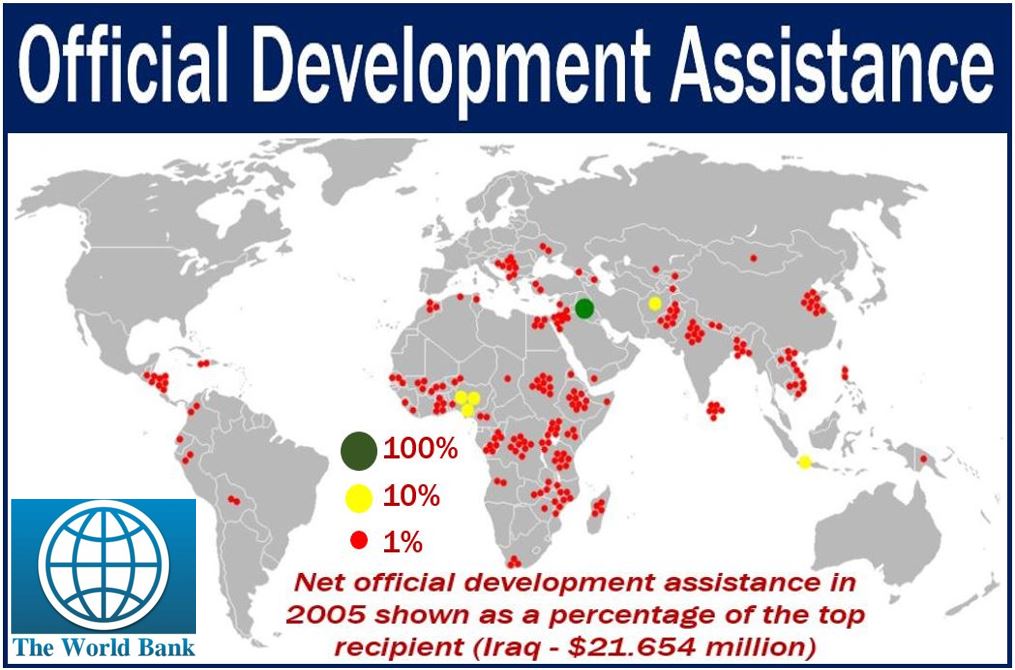Official development assistance – definition and meaning
Official development assistance or ODA is an indicator of international aid flow. In other words, how much money and help go from the advanced to the developing economies. The OECD’s Development Assistance Committee coined the term in 1969 to measure aid.
OECD stands for the Organization for Economic Co-operation and Development.
Academics and journalists use the term ‘official development assistance’ to indicate the floor of international aid.
The Assistance Development Committee (ADC) has measured flows of aid to developing nations for more than half a century. After first defining ODA in 1969, it then tightened the definition in 1972.
“Official development assistance is the key measure used in practically all aid targets and assessments of aid performance.”
Official development assistance – OECD definitions
The OECD states that it cannot report military equipment or services as official development assistance. It also excludes anti-terrorism activities.
However, when nations donate military services to deliver humanitarian aid, it forms part of the ODA definition.
ODA does not include most peacekeeping expenditures. The Committee adds, however, that it does include some developmentally-relevant activities within peacekeeping operations. There must be a clear definition of those activities.
As long as it is only for civilian use, nuclear energy forms part of ODA.

We define cultural programs as official development assistance if they build cultural capacities in the recipient nations. However, the definition does not include one-off tours by a country’s athletes or artists.
ODA – United States
In 2015, the US provided $31.1 billion in ODA. This represented 0.17% of GNI. GNI stands for gross national income. The amount was 7% less than in 2014.
As a percentage of GNI, the US is the world’s twentieth largest Development Assistance Committee provider. It is the largest provider by volume.
“The United States’ share of untied ODA was 63.2% in 2014, while the DAC average was 80.6%. The grant element of total ODA was 100% in 2014.”
ODA – United Kingdom
The UK provided $18.7 billion in net ODA in 2015, says the OECD. This represented 0.71% of GNI, and an increase of 3.2% compared to 2014.
As a percentage of GI, the UK was the sixth largest ODA provider and the second largest in volume.
“All of the United Kingdom’s ODA (excluding administrative costs and in-donor refugee costs) was untied in 2014 (as well as in 2012 and 2013), while the DAC average was 80.6%. The grant element of total ODA was 98.9% in 2014, a decrease from 100% in 2013.”
The UK’s Foreign & Commonwealth Office(FCO) uses its overseas aid budget to support four strategic objectives. It also calls this overseas aid budget its official development assistance.
– Strengthen worldwide peace, security, and governance.
– Enhance resilience as well as response to crises.
– Promote prosperity across the world.
– Tackle extreme poverty. This objective also includes helping the world’s most vulnerable.
Video – Official development assistance
In this University of Leicester video, Prof. Iain Gillespie talks about ODA; in other words, the ‘aid budget.’

